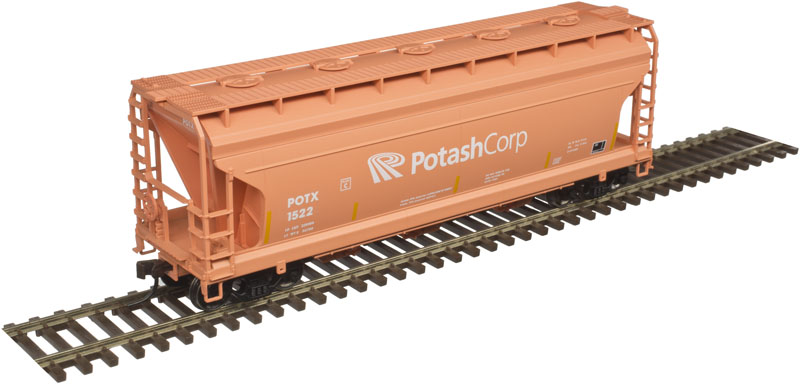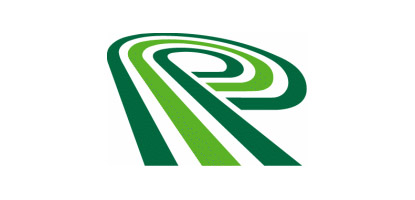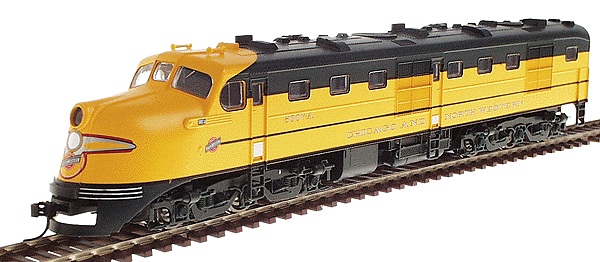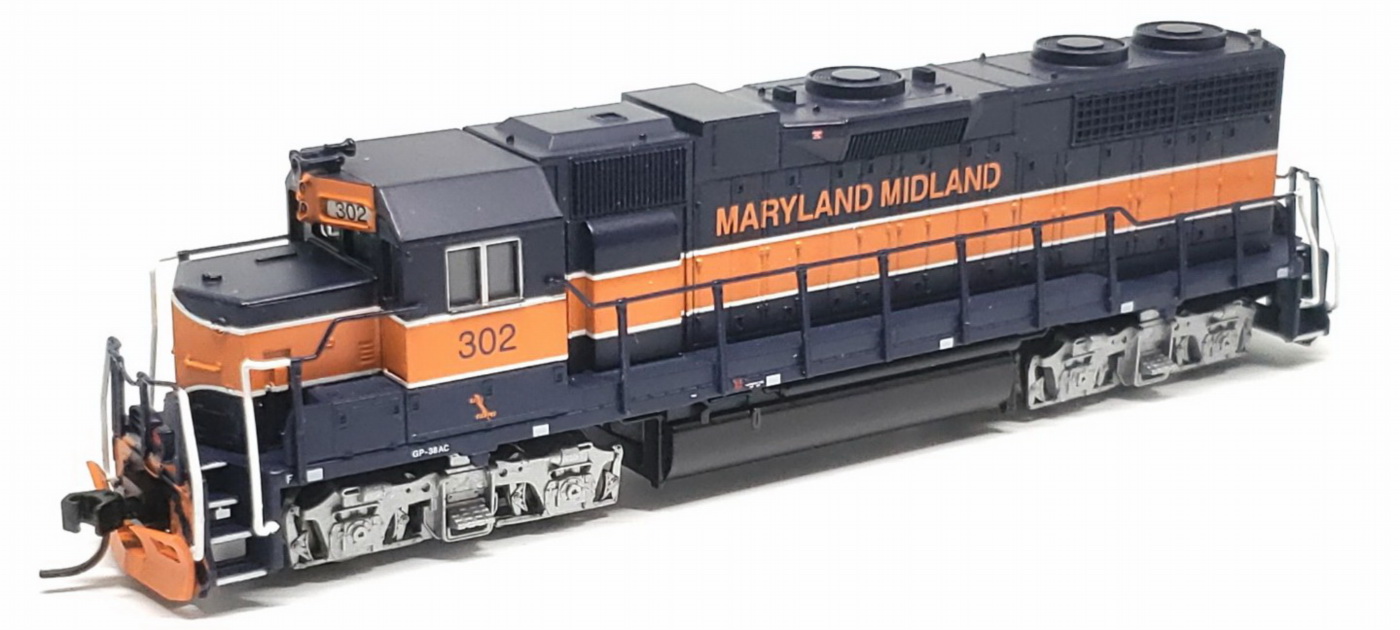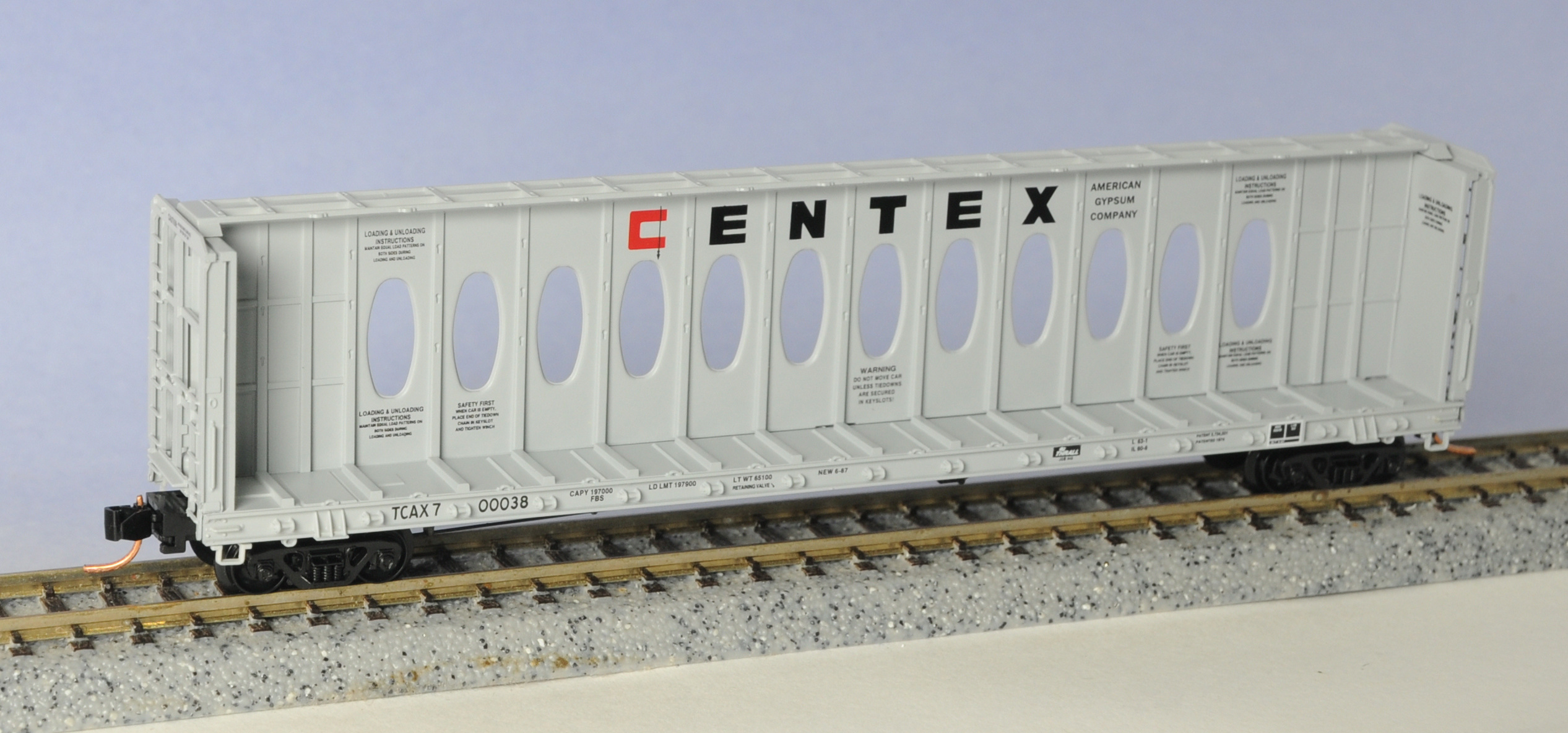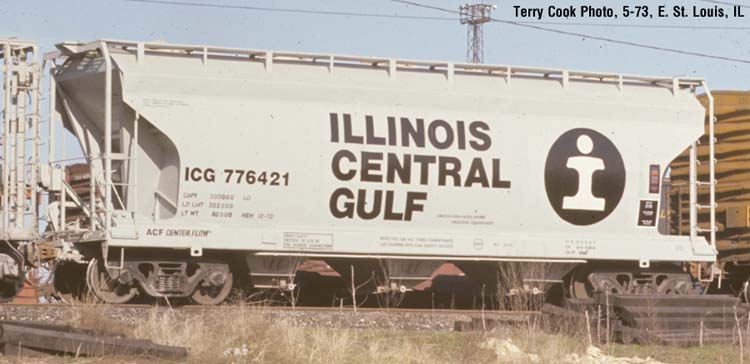Body Style Information: True scale dimensions with accurate details.
Weighted, detailed underframes.
Equipped with AccuMate® Knuckle Couplers.
Trucks equipped with free-rolling metal wheels.
Accurate painting and lettering.
Prototype Information: Covered hoppers such as these are used to transport any dry bulk material that you don't want exposed to the elements. Salt, fertilizer, some dry chemicals, and bauxite are common loads for this car. Over 200 were built from 1967 to 1972. The three-compartment ACF® 3560 Center Flow Covered Hopper was designed for the transport of high-density dry bulk ladings of 50 – 60 pounds per cubic foot. The 100-ton car was designed to fit into the smallest modern plate diagram dimensions, Plate B.
Road/Company Information: The initial public offering of Potash Corporation of Saskatchewan Inc. occurred on November 2, 1989 on the Toronto (at CDN $18.00 per share, pre-splits) and New York (at US $15.125 per share, pre-splits) stock exchanges. The company had been a Crown corporation owned by the Government of Saskatchewan.
The company is a Canadian corporation based in Saskatoon, Saskatchewan. The company is the world's largest potash producer and the third largest producers of nitrogen and phosphate, three primary crop nutrients used to produce fertilizer. At the end of 2011, the company controlled twenty percent of the world's potash production capacity, two percent of nitrogen production capacity and five percent of phosphate supply. The company is part-owner of Canpotex, which manages all potash exporting from Saskatchewan. It also has a joint-venture with Sinochem named Sinofert. In late 2013, it was 60%-owned by institutional shareholders. In 2007, the CEO, William Doyle was by far the highest earning CEO in Canada, earning over $320 million.
The company is a Canadian corporation based in Saskatoon, Saskatchewan. The company is the world's largest potash producer and the third largest producers of nitrogen and phosphate, three primary crop nutrients used to produce fertilizer. At the end of 2011, the company controlled twenty percent of the world's potash production capacity, two percent of nitrogen production capacity and five percent of phosphate supply. The company is part-owner of Canpotex, which manages all potash exporting from Saskatchewan. It also has a joint-venture with Sinochem named Sinofert. In late 2013, it was 60%-owned by institutional shareholders. In 2007, the CEO, William Doyle was by far the highest earning CEO in Canada, earning over $320 million.
Brand/Importer Information: In 1924 Stephan Schaffan, Sr. founded the Atlas Tool Company in Newark, New Jersey. In 1933 his son, Stephan Schaffan, Jr., came to work for his father at the age of sixteen. Steve Jr. built model airplanes as a hobby and frequented a local hobby shop. Being an enterprising young man, he would often ask the owner if there was anything he could do to earn some extra spending money. Tired of listening to his requests, the hobby-store owner threw some model railroad track parts his way and said, "Here, see if you can improve on this".
Atlas has made a ton of wonderful products throughout the years and we often get questions one whether we have run a certain road name on a particular model. It should be noted that Atlas locomotives and rolling stock are greatly appreciated for their superior operating and running characteristics. Atlas products are also well known for their outstanding collectability not only due to their superior prototypical workmanship, details and decoration, but because there are relatively so few of them made. Each and every production run has been carefully built to market demand, meaning almost every piece in any given run is sold out by Atlas on arrival or shortly thereafter, thus creating a built in collectors market.
Atlas has made a ton of wonderful products throughout the years and we often get questions one whether we have run a certain road name on a particular model. It should be noted that Atlas locomotives and rolling stock are greatly appreciated for their superior operating and running characteristics. Atlas products are also well known for their outstanding collectability not only due to their superior prototypical workmanship, details and decoration, but because there are relatively so few of them made. Each and every production run has been carefully built to market demand, meaning almost every piece in any given run is sold out by Atlas on arrival or shortly thereafter, thus creating a built in collectors market.
Item created by: devsummers428 on 2019-12-21 13:10:06. Last edited by devsummers428 on 2020-05-07 00:00:00
If you see errors or missing data in this entry, please feel free to log in and edit it. Anyone with a Gmail account can log in instantly.
If you see errors or missing data in this entry, please feel free to log in and edit it. Anyone with a Gmail account can log in instantly.


